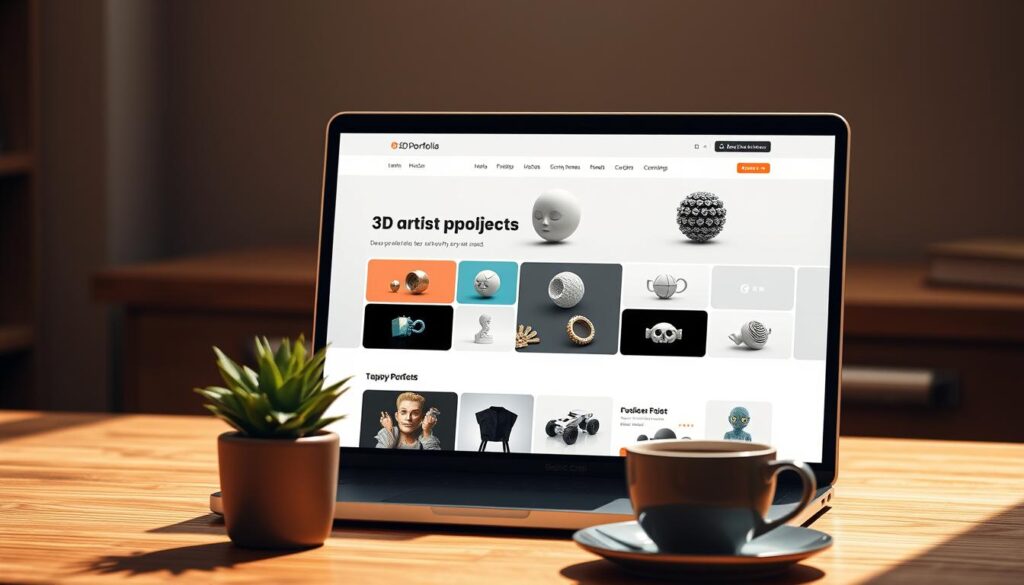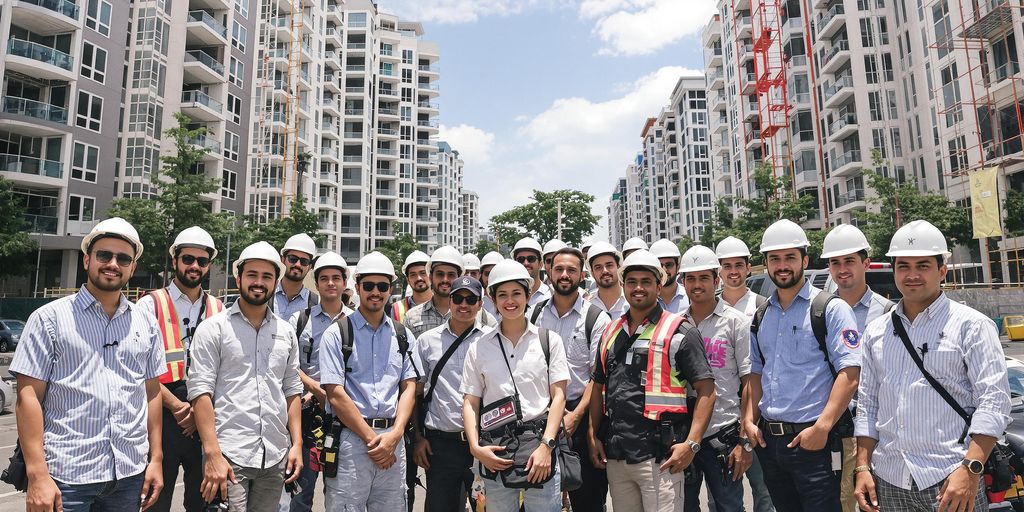The rules of building a creative career are changing faster than ever. While polished portfolios and technical skills remain essential, landing roles in 2025 demands something new: strategic self-marketing that positions you as an innovator, not just an applicant. Companies now seek artists who can shape workflows in emerging fields like GenAI-assisted design and Digital Twins—not just follow instructions.
Traditional resumes alone won’t cut it in this evolving landscape. Employers increasingly prioritize candidates who demonstrate proactive problem-solving and niche expertise. For example, proven resume templates now emphasize measurable achievements over generic duties, reflecting this shift toward value-driven hiring.
Your success hinges on balancing technical mastery with visibility. Platforms like RoboApply’s portfolio-building tools help streamline this process, but the real differentiator is your ability to anticipate industry needs before job postings exist. This requires continuous learning in areas like real-time rendering pipelines and AI-assisted asset creation.
Key Takeaways
- Proactive career-building beats reactive job applications in today’s market
- Technical skills must pair with strategic self-positioning to stand out
- Emerging tech fluency separates innovators from replaceable candidates
- Digital presence acts as a 24/7 portfolio for decision-makers
- Resilience becomes critical in lengthy, competitive hiring processes
Understanding the 3D Industry in 2025
Creative fields now demand hybrid thinkers who merge technical precision with AI fluency. The industry is reshaping itself around tools that automate repetitive tasks while amplifying human creativity. This shift creates unique opportunities for those ready to lead rather than follow.
Emerging Technologies and Trends
Mastering real-time rendering pipelines separates contenders from frontrunners. Over 73% of companies now require experience with AI-assisted modeling tools, according to industry surveys. Procedural generation techniques are becoming standard in game design workflows, enabling rapid asset creation.
Market Demand and Challenges
While game studios scramble to adopt Digital Twin systems, many lack internal expertise. This gap lets skilled artists negotiate roles shaping entire production pipelines. However, challenges like AI integration headaches and skill obsolescence require constant learning.
Salary benchmarks reveal a 40% pay premium for professionals combining traditional modeling skills with GenAI platforms. Use resources like updated compensation guides to assess your market value accurately. The world of 3D artistry rewards those who treat technology as a collaborator, not a threat.
Crafting a Standout Resume for a 3D Artist Career
Your resume isn’t just a document—it’s your first interactive portfolio piece. While technical skills open doors, hiring managers at top studios report choosing communicative candidates 68% more often when portfolios are comparable. This makes your resume’s clarity as vital as your best 3D renders.

Smart Tools for Career Advancement
RoboApply’s AI Resume Builder transforms raw experience into compelling narratives. The tool automatically formats your software proficiencies and project timelines while suggesting measurable achievements. One user landed a game artist role at Ubisoft after restructuring their resume to highlight Unreal Engine pipeline optimizations.
Three non-negotiable upgrades for 2025 resumes:
- Use RoboApply’s ATS Optimizer to beat automated filters at EA and Pixar
- Lead with your strongest portfolio pieces using embedded demo reel links
- Tailor proven resume templates for each studio’s creative process
“We’re not just hiring artists—we’re recruiting problem-solvers who document their design process thoroughly.”
RoboApply’s Grammar Checker ensures zero errors in your career game narrative. Pair this with a strong portfolio that shows wireframes beside final renders to demonstrate your workflow. Remember: Your resume should make recruiters feel they’ve already seen your best work before clicking your ArtStation link.
Essential Skills and Tools for 3D Artists
Modern 3D careers demand mastery of tools that turn concepts into market-ready assets. Focus your energy on these critical areas to meet studio expectations and deliver professional-grade results.
Software Mastery: Non-Negotiable Foundations
Start with Maya and Blender for modeling and rigging. These platforms dominate character animation workflows at major studios. Substance 3D Painter remains essential for texturing – 87% of AAA game projects require its use, according to industry skill reports.
Three non-negotiable technical competencies:
- Real-time rendering pipelines using Unreal Engine 5
- High-resolution sculpting in ZBrush for organic surfaces
- Motion capture data cleanup for natural character movement
Technical Execution: Beyond Button-Clicking
Anatomy knowledge separates adequate work from exceptional character design. Study muscle groups and skeletal structures to create believable models. Pair this with UV mapping expertise to optimize textures for game engines.
Game art requires balancing detail with performance. Master polygon reduction techniques while maintaining visual integrity. As one industrial design career guide notes: “Artists who understand technical constraints get hired faster than pure aesthetes.”
“We test every candidate’s ability to troubleshoot rigging errors in Maya – it’s our litmus test for problem-solving skills.”
Building a Strong Online Presence and Portfolio
Visibility fuels career momentum in today’s digital-first creative economy. Your online presence acts as a 24/7 networking event, where polished portfolio pieces and strategic storytelling attract opportunities before you apply. Take Patrick Foley (Patrick 4D), whose food-themed 3D renders went viral after he structured his website like a restaurant menu – proving creativity in presentation matters as much as technical skill.

Leveraging Social Media and Personal Branding
Platforms like ArtStation and LinkedIn aren’t just galleries – they’re stages for demonstrating problem-solving. Post breakdowns showing wireframes beside final renders, and explain technical choices in plain language. One artist landed a game art role at Insomniac Games by sharing weekly Unreal Engine optimization tips that non-technical recruiters could grasp.
Showcasing Work Through Consistent Content
Build credibility with a three-part content strategy:
- Monday: Work-in-progress shots with brief captions about challenges overcome
- Wednesday: Time-lapse videos of modeling/texturing workflows
- Friday: Finished pieces tagged with relevant studios’ social media manager strategies
This rhythm keeps your portfolio fresh in algorithms and human minds alike. As Foley proves: When you make complex design processes digestible, you become the obvious choice for teams needing cross-functional collaborators.
How to Land a 3D Artist Job in 2025
Success in today’s competitive market requires flipping traditional job search logic. Instead of chasing listings, build demand for your expertise by becoming a visible problem-solver. This approach positions you as a strategic asset rather than another applicant in the queue.
Step-by-Step Strategy for Proactive Applications
Start by defining your niche. Focus on game studios pushing boundaries in real-time rendering or AI-assisted design. Use industry insider tactics to identify teams needing your specific skills before roles get posted.
Follow this action plan:
- Map 10 target companies using tools like LinkedIn’s “People Also Viewed” feature
- Create portfolio pieces addressing each studio’s public tech challenges
- Engage decision-makers through thought leadership posts on ArtStation
Track opportunities systematically. RoboApply’s job tracker helps monitor application statuses while automating follow-ups. One user secured three interviews by setting reminders to reconnect with recruiters every 14 days.
“We hired an artist who reverse-engineered our game trailer assets to show how he’d optimize them. That initiative beat 200+ applications.”
Build relationships through virtual events and Discord communities. Share actionable tips about pipeline optimizations or new software features. When you become a resource, opportunities find you.
Interview Preparation and Communication Tips
Mastering the interview process requires more than polished answers—it demands strategic practice tailored to studio dynamics. Large teams often use panel formats where you’ll present your work to multiple stakeholders simultaneously. Start by researching each team member’s role through LinkedIn to anticipate their priorities.
Mock Interviews, Feedback, and Confidence Building
Record yourself answering common questions like “Walk us through your modeling process.” Analyze playback for filler words or unclear explanations. Tools like RoboApply’s AI Interview Coach simulate real studio scenarios, providing guidance on pacing and technical terminology.
Prepare for collaborative tests by practicing with peers. One game artist secured a role at Bungie after rehearsing asset optimization challenges with a Discord group. Focus on explaining decisions clearly—studios value artists who can articulate trade-offs between detail and performance.
Boost confidence through targeted preparation:
- Study graphic design resume principles to discuss past projects persuasively
- Role-play giving/receiving feedback to handle critique smoothly
- Time mock sessions to match real interview lengths (usually 45-90 minutes)
Remember: Your goal isn’t perfection, but demonstrating how your work aligns with the industry’s evolving needs. Every interaction should reinforce your ability to enhance their creative process.
FAQ
What emerging technologies should 3D artists master by 2025?
Focus on Unreal Engine 5’s Nanite and Lumen systems, real-time rendering workflows, and AI-assisted tools like NVIDIA Omniverse. Stay updated on procedural generation techniques and VR/AR content creation pipelines, which are critical for gaming and virtual production roles.
How can I optimize my resume for ATS systems in creative fields?
Use RoboApply’s AI Resume Builder to embed industry-specific keywords like “PBR texturing” or “motion capture cleanup.” Highlight Unreal Engine and Blender expertise in your skills section, and quantify achievements (e.g., “Reduced render times by 40% using Houdini simulations”).
Which social platforms are best for showcasing 3D art portfolios?
ArtStation remains the industry standard, but supplement it with LinkedIn for networking and Instagram Reels/TikTok for process videos. Join Polycount or CGSociety forums to engage with studios like Industrial Light & Magic or CD Projekt Red.
What’s the most effective way to find unadvertised 3D artist job openings?
Participate in game jams like Ludum Dare, attend GDC or SIGGRAPH events, and connect with Blizzard or Epic Games recruiters via LinkedIn. Use #gameart and #3dmodeling hashtags to signal availability for freelance or contract roles.
How should I prepare for a technical interview at a AAA game studio?
Expect real-time asset optimization tests and ZBrush sculpting challenges. Practice explaining your workflow for character rigging or environment design using Maya or Substance Painter. Use RoboApply’s Mock Interview Tool to simulate pressure scenarios.
What portfolio mistakes instantly disqualify candidates in 2025?
Including unfinished wireframes or non-commercial fan art without context. Studios like Naughty Dog prioritize polished final renders with breakdowns showing UV mapping and lighting passes. Avoid generic “fantasy armor” sets—highlight industry-specific work like medical animations or archviz walkthroughs.
Are traditional art skills still relevant for 3D careers?
Yes. Studios like Pixar require figure drawing and color theory mastery even for technical roles. Include speed sculpting videos and concept art in your portfolio to demonstrate foundational skills that enhance digital sculpting or texture painting workflows.


















